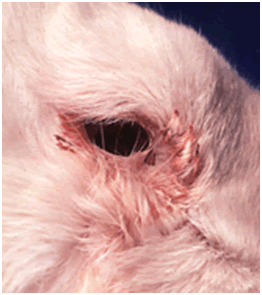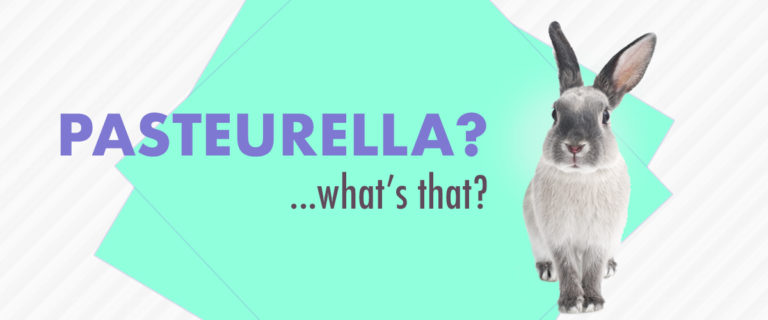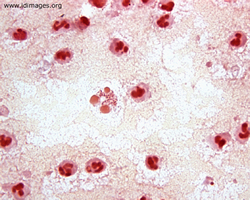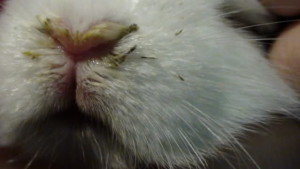Pasteurella multocida is the whole name of this nasty bacteria, but understandably, it is often referred to as “snuffles”. Snuffles sounds pretty harmless, almost cute, right? Not so. Pasteurella can be devastating, and unfortunately, it is also highly contagious.
Here’s the good news: if your rabbit is strong and healthy, with a great diet, proper weight, and lots of activity in his life, the infection will most likely pass without any problems (or sit there dormant).
Pasteurella is everywhere. It is common, and almost every rabbit will have the bacteria present at some point. It is kind of like the cold in humans – if we are healthy, we are far less susceptible. But if we are weakened, elderly, or have other issues going on, we can not only come down with a cold, but it can progress into some really nasty respiratory illnesses. Same concept for rabbits and Pasteurella.
The bacteria starts out in the nose. Since rabbits clean their faces with their front paws, the infection is then on their paws and forelegs. Then it is on the floor, and the toys, and, well, you see how this goes.
Infected rabbits who do get “symptomatic” usually begin with a snotty nose, just like a kindergartener. This ick starts out clear, and then turns thicker and whitish yellow. They snort and schnurffle. The infection can travel to their eyes, causing conjunctivitis, and to their ears. Ear infections may make them shake their heads, scratch at the bases of the ears, or turn their necks at a disturbing angle. At their worst, ear infections make the rabbit all disoriented, unable to walk properly or stand. Of course, at this point, your rabbit is feeling like c$%*, and usually eating comes to a halt. Now we are in danger of GI stasis on top of the Pasteurella…the original bacterial infection has snowballed into a full-blown crisis.

Photo credit: dora.missouri.edu
The time to begin treatment, then, is as soon as your rabbit shows signs of a respiratory infection. Not all respiratory infections are Pasteurella…but it is worth treating any snuffles with care. There are herbs that do a good job with respiratory support (such as Slippery Elm), and you may want to find an herbal support mix. Of course, a call to your trusted exotic vet is also something you definitely want to do if the symptoms do not go away within a few days, or worsen. Make sure your rabbit continues to eat enough fiber! This is critical to preventing a dangerous spiral.
How can we prevent Pasteurella infection? We probably can’t prevent it entirely. We can lessen the likelihood of any symptoms, however, by reducing stress. Stress seems to have a big effect on which rabbits show symptoms and which don’t. We can make sure our rabbit’s immune system is strong and supported with diet. And we can isolate any rabbit showing symptoms from any other rabbit, since the spread of disease is through direct contact with mucous. Don’t forget – you can get the infected mucous on your hands and clothes just by handling an infected rabbit – so if you’ve got one rabbit family member infected, wash up and maybe even change your clothes before spending time with any other rabbit friend.
One of the best things you can do for your furry friend is to have a good relationship with a vet who specializes in small exotics. Go for a check up, meet, talk, get teeth checked regularly. Then when a crisis happens, you already have a good base of information, and a trusted resource for veterinary care. So go make friends with your vet, and we hope you never end up there for Pasteurella!








